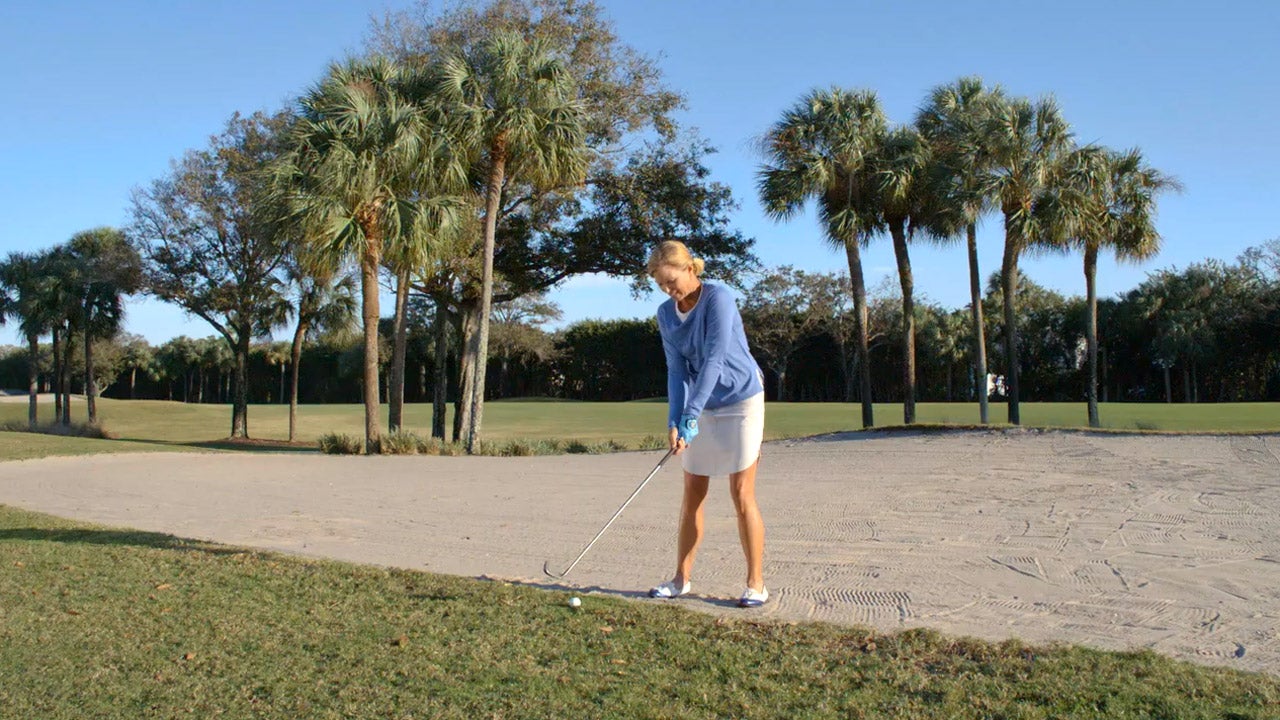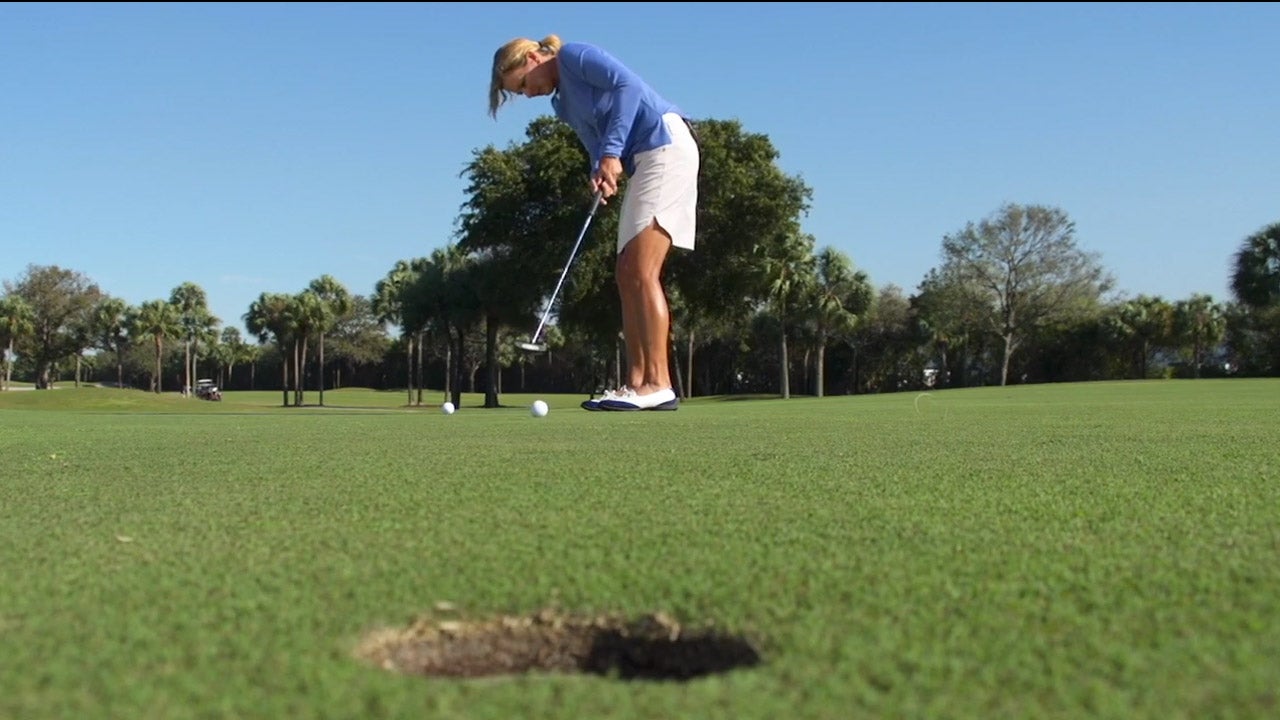Not only does it take good technique to be a low-handicap, but it also takes time and commitment. Often, low-handicappers make golf look easier because their technique is clean and efficient, and they manage their way around the course so smartly.
The good news is you can learn from the things they do, and the faster you implement them yourself, the more quickly you’ll be on your way to joining that group.
1. They’re honest about their yardages
Knowing exactly how far all of our clubs carry — including roll distance — makes maneuvering around the course more intelligently so much easier.
Too often I see my higher-handicap students overestimate how far they hit the ball on average, and often they don’t always factor in roll. If, for instance, you hit your 9-iron 130 yards in total but only carry it 127 yards, that three yards could be the difference on the course between a short birdie putt and being plugged in the bunker.
There are two keys to making sure you dial-in your yardages: First, you need to make sure your clubs are properly fit by a clubfitter that uses a launch monitor, like GOLF.com’s sister company, True Spec Golf, so you’re consistent from shot-to-shot and dialed-in.
Next, you need to take that information to the course using on-course technology. There are many great options, but I use Golf Logix (another sister company of GOLF.com), which helps you stay on track during your round.
2. They know when to take a bit off their swing
Low-handicap golfers are great at knowing when to take a full swing versus taking a bit of extra club and throttling back on the swing length and speed. You may also see them grip down on the handle of the club to take a bit of distance away from the total shot. Often to a back pin, or on a windy day, you may see the best players at your club do this. By taking a bit more club and a shorter swing, it can be easier to control the ball flight so that the wind does not take control. Always swinging 100% can lead to inconsistency.

3. They know when to attack the pin
Not all pin positions on the greens are created equal. Lower-handicappers choose when to be aggressive in aiming for the pin, and when to aim for the middle; they take their expected two-putt and move on. When making their decision, they’re looking at factors like how the wind may help shape their ball toward the pin, or where their most likely mis-hit will end up. All it takes is one bad decision for a hole to turn into a disaster.
4. They always know where the trouble is
Low-handicap golfers are masters at minimizing penalty strokes, probably because they’ve experienced the pain of making the costly mistakes in the past. They won’t always say what they’re thinking out loud — “don’t hit it in the water,” for instance — but you can see them react by aiming away or positioning themselves on tee boxes to aim away from the trouble.
If the out-of-bounds was on the left side of the hole, for example, a lower-handicap golfer would know to favor starting on the left side of the tee box, which promotes aiming to the right and away from the trouble. Teeing up on the side of the trouble can be a good general rule.
5. They adjust their expectations
Some courses are easier than others. Low-handicap golfers are usually great at recognizing a difficult course or, for that matter, a particular hole. Changing expectations and game plans can help all golfers to score better even in more difficult conditions. Knowing the value of a good bogey, for example, is a big part of this, rather than pushing to save par and ending up with a double. Simply changing your mindset can make it more likely that you’ll experience success.

6. They have good speed control
Because it can take time to become a low-handicapper, it often means there is a lot of experience that comes simply through rolling putts over time.
One of these skills is knowing the right speed, which helps players avoid three-putting and keep their scores down. And while it certainly may take more time to develop this instinct, it doesn’t mean that you cannot get really good at controlling your distance sooner.
One of my favorite techniques is to calibrate your putting stroke. For every inch of backstroke, the ball will roll a predictable distance for each golfer. Try calibrating one inch, two inches, 5 inches, 10 inches and 15 inches. Pace to see how far the ball rolls on a relatively flat surface and this will help to give you a grid to know approximately how long of a backstroke you need for different distances. While you may need to adjust for uphill or downhill by adding/subtracting stroke length, it will help you on your way to controlling distance and decreasing three-putts.
7. They have good clubhead speed
One of the necessary skills to getting your handicap low is that you hit your ball not only relatively solidly but also far enough. Distance helps make your life easier, and often covers for other weak spots in your game. Some golfers just know how to generate speed, but if you don’t fall into that category, you can train speed over time. Two of my favorite training aids to help you build speed are the Orange Whip and the Super Speed training system.
8. They use all of the tee box
Have you ever seen a really good player tee off so close to the tee marker that you think they might hit it? While this may look odd, as I mentioned earlier, often it is for a good reason.
Next time you go to the course, try walking from one side of a tee box to the other and see how your view of the hole may change. Many times placing yourself on one side or the other can open the angle to the fairway or the green to avoid having to maneuver hazards or bunkers. If you can use this skill of finding the path of least resistance by using better angles off the tee box, it can help to improve course management and avoid more hazards.

9. They have a go-to swing
While you may think that low handicappers hit the ball well all the time, I can promise you, they do not. Some days are better than others for all of us. A better golfer may be able to self-correct more easily and quickly, but they also have a “plan B” swing, when their regular swing starts to let them down or fails altogether.
There are also ways to check that your set-up is correct, like checking your posture — i.e., where your weight falls into your feet as well as how far your hands are from your body. It is a lot of pressure to have only one option, and when that doesn’t work, what do you do? Giving up is not an option here … ever! A great choice for a plan B is to take more club and a shorter swing. Also, keeping your weight on your forward foot throughout the swing, much like a knockdown shot, can also help to eliminate moving parts and get you through the round.
10. They have a coach they trust
One of the most interesting things I see in the best players is that, often, they practice the hardest. They also have the most help. One of the tricky aspects of golf is that other than when you use video, you cannot see yourself and often it takes a trained eye and years of teaching experience to truly understand what needs to be corrected in a set-up or swing to get the quickest result. I have had the privilege of working with many great instructors, including Mike Adams, in a golf school atmosphere.
Most successful players have an instructor or a team who knows them and their game so when they have issues they can quickly be addressed and improved. Other than the problem management, there is also a lot of maintenance that is involved with a good golf swing. Keeping a watchful eye on set-ups and motions can prevent golfer from making mistakes for too long.
When looking for an instructor, I would look to see who is the busiest. The busiest teachers are probably that way for a reason.

